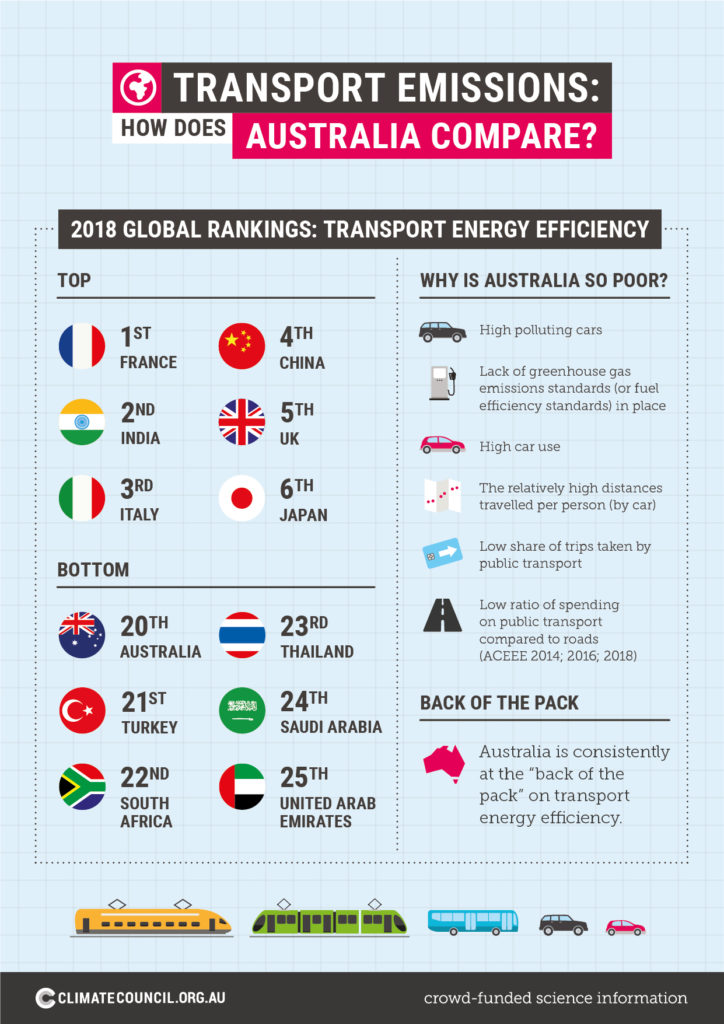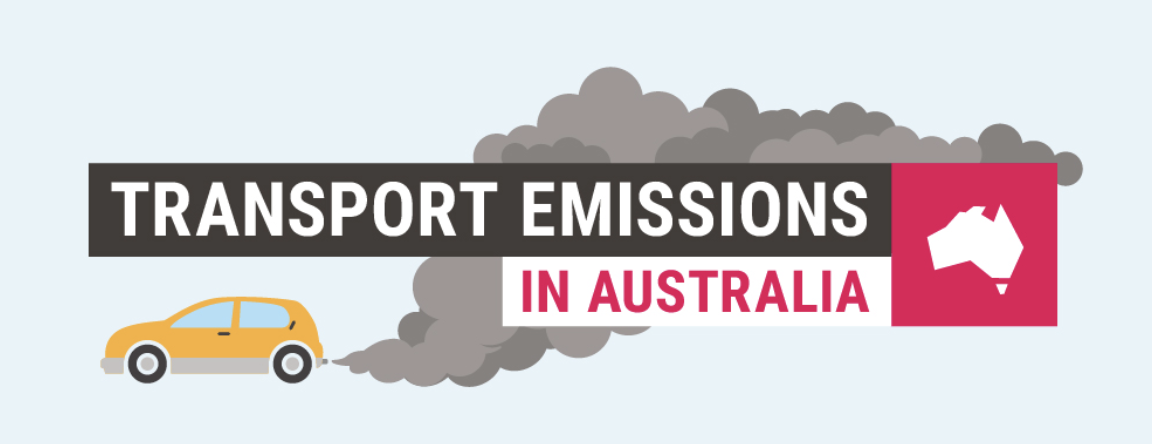While greenhouse gas emissions from Australia’s electricity sector have received significant media and political attention in recent years, the transport sector – a large and growing source of emissions – has largely escaped the spotlight.
Here we outline the problem of transport emissions and key climate solutions.
Transport: second largest emitter, highest emissions growth
Transport – cars, trucks, public transport, domestic flights and shipping – is Australia’s second largest source of greenhouse gas pollution. The sector emitted 102 million tonnes carbon dioxide (MtCO2) in 2018, representing 18% of Australia’s annual greenhouse gas pollution.
Transport emissions have the highest rate of growth of any sector since 1990. With no action, transport emissions are projected to continue growing to 2030 (expected to reach 111 MtCO2 by 2030).
The major source of the problem is cars, responsible for roughly half of Australia’s greenhouse gas pollution from transport. In fact, Australian cars emit roughly the same per year as Queensland’s entire coal and gas fired electricity supply.
How does Australia compare on transport emissions?
Australia lags well behind the global pack when it comes to tackling transport emissions. In fact, on international scorecards, Australia lags behind Russia, Mexico and Indonesia on transport energy efficiency. The reasons for Australia’s poor performance include:
- High polluting cars
- Lack of greenhouse gas emissions standards
- High car use
- Relatively high distances travelled per person by car
- Low share of trips taken by public transport
- Low ratio of capital spending on public transport compared to roads
What are the solutions to transport emissions?
There are solutions available now to drive down greenhouse gas pollution from transport. These include:
- Providing viable alternatives to driving, such as expanding access to reliable, comfortable public transport, cycling and walking alternatives.
- Electrifying and powering cars, buses, trains and light rail with 100% renewable energy.
- Adopting policies and incentives to encourage lower emitting vehicles, such as mandatory greenhouse gas emissions standards and electric vehicle targets.

For more information, check out our report Waiting for the Green Light: Transport Solutions to Climate Change.











